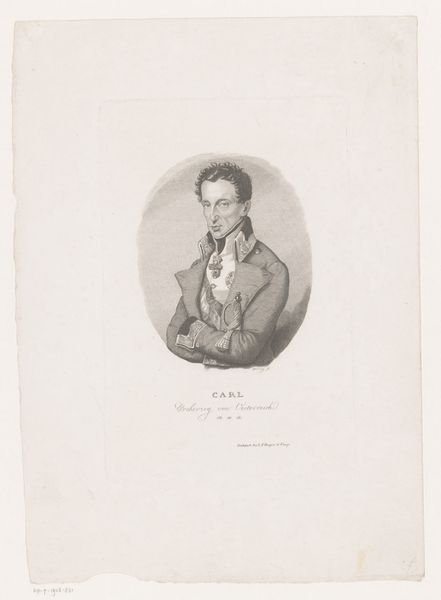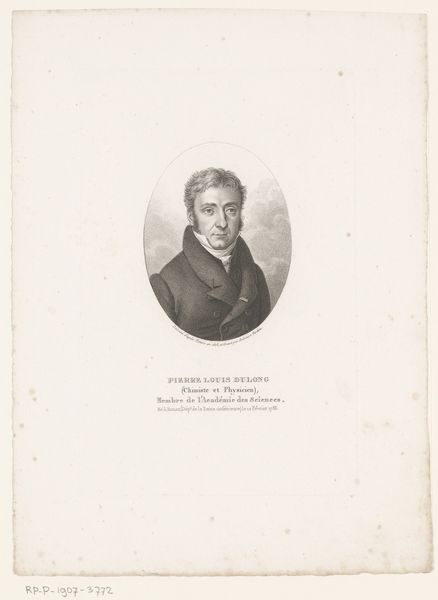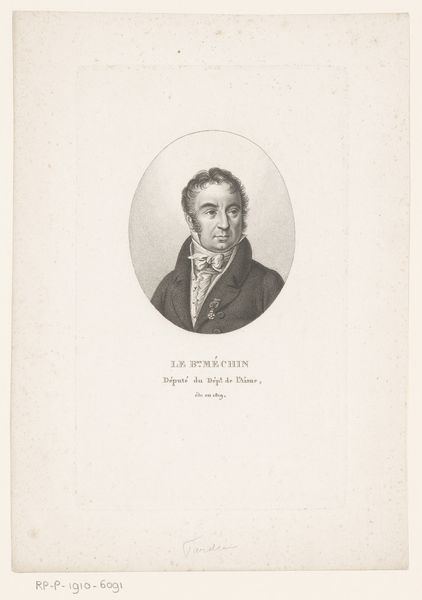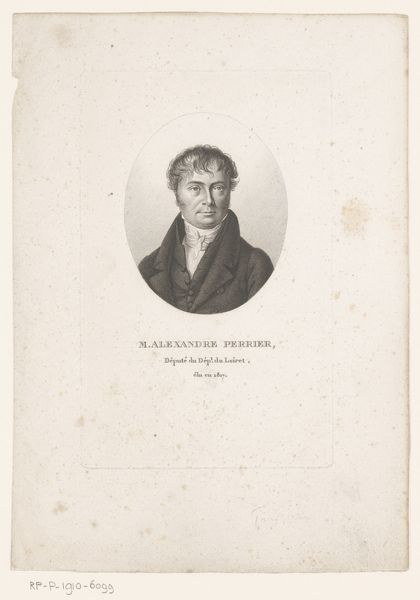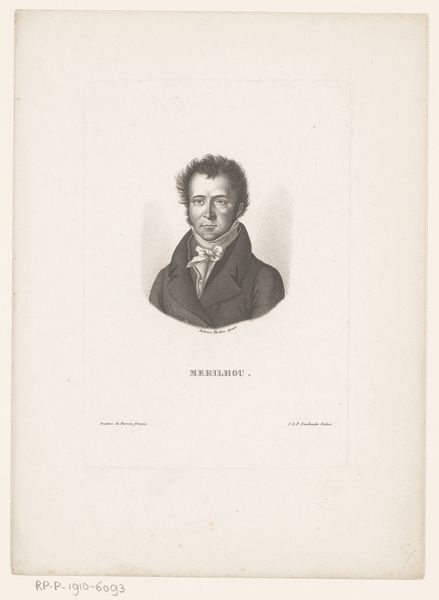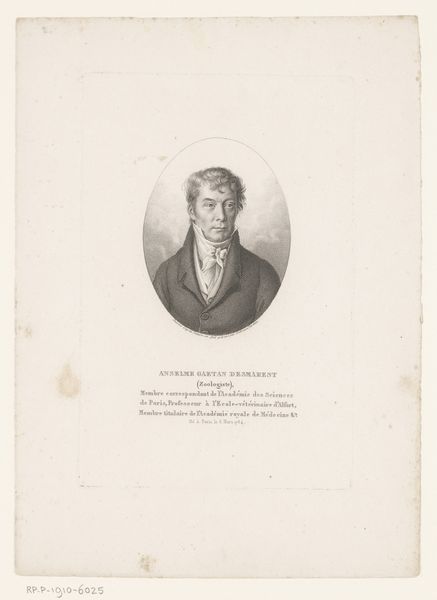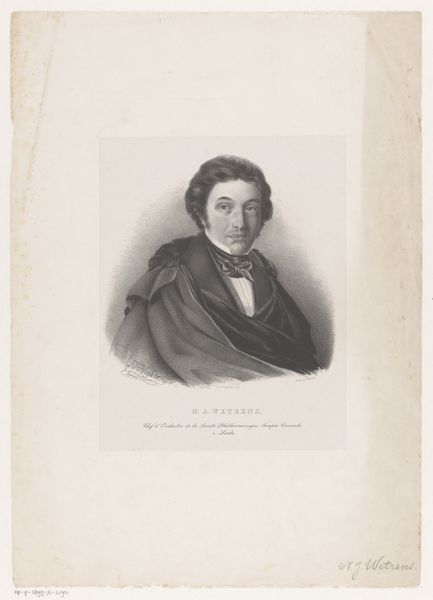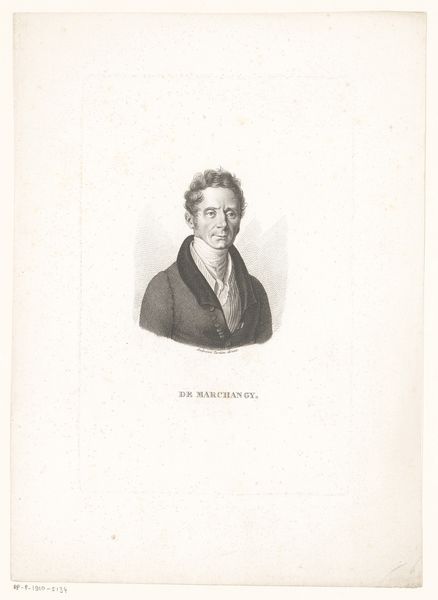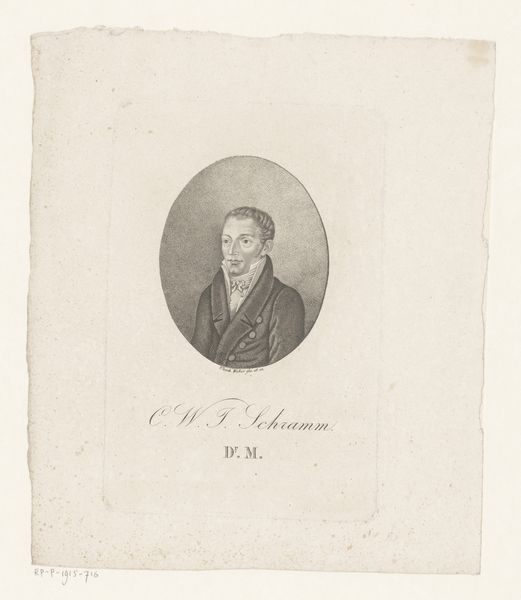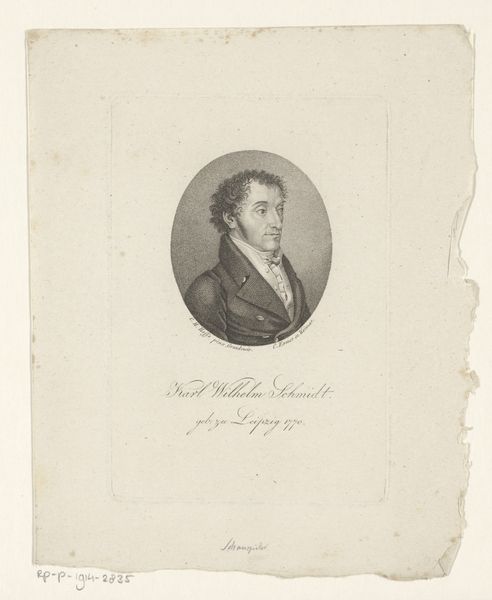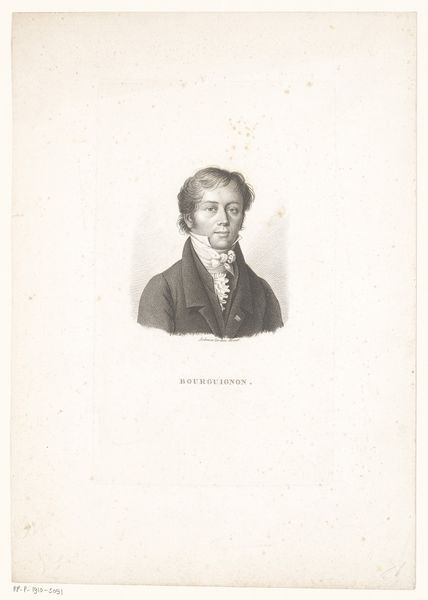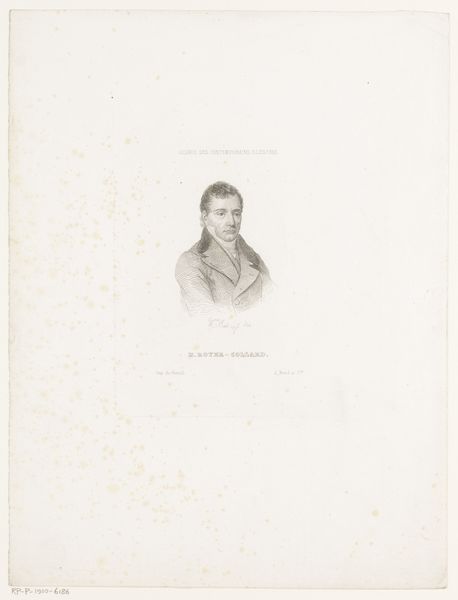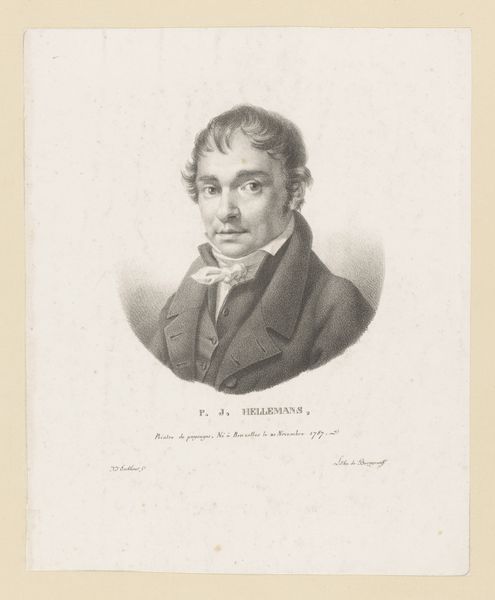
drawing, paper, pencil, engraving
#
portrait
#
drawing
#
neoclacissism
#
aged paper
#
toned paper
#
paper
#
pencil
#
engraving
#
monochrome
Dimensions: height 214 mm, width 136 mm
Copyright: Rijks Museum: Open Domain
Ambroise Tardieu created this print of Félix-Philippe-Charles d'Hunolstein. The portrait is framed by an oval, a symbol of rebirth and eternity since ancient times. The oval’s continuous line contains the Count, suggesting his enduring legacy. We see this motif echoed through history, from Renaissance paintings to modern logos, signifying wholeness and protection. Think of Botticelli’s “Birth of Venus,” where the goddess emerges from a shell, a similar oval form representing emergence and renewal. The oval's reappearance in various cultural contexts isn't coincidental. It speaks to a shared human experience of seeking continuity, engaging our subconscious desire for protection against the passage of time. The Count's likeness, preserved within this timeless shape, engages our deepest longings for immortality. The oval returns in different contexts, reminding us of the cyclical nature of life, death, and rebirth.
Comments
No comments
Be the first to comment and join the conversation on the ultimate creative platform.
